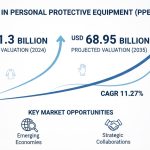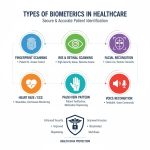The Evolving Landscape of Crop Protection Chemicals: Market Trends, Challenges, and Opportunities Through 2030
Crop protection chemicals represent a critical component of modern agriculture, encompassing pesticides, herbicides, fungicides, and other chemical agents designed to safeguard crops from harmful organisms while enhancing agricultural productivity. As global food security concerns intensify amid rising population figures, these chemicals have become indispensable tools for farmers worldwide seeking to maximize yields and minimize losses. The Global Crop Protection Chemicals Market, valued at USD 64.64 billion in 2022, is projected to reach USD 79.37 billion by 2030, growing at a compound annual growth rate (CAGR) of 2.60% during the forecast period. This steady growth trajectory underscores the enduring significance of these products in contemporary farming practices despite mounting environmental concerns and regulatory pressures.
Several compelling factors are driving the sustained demand for crop protection chemicals across global agricultural landscapes. Foremost among these is the pressing need to enhance agricultural productivity on increasingly limited arable land. With the global population expected to reach 9.7 billion by 2050, farmers face unprecedented pressure to optimize crop yields while contending with diminishing resources. Crop protection chemicals enable growers to safeguard their investments against yield-reducing threats, thereby contributing significantly to global food security objectives. Additionally, evolving consumer preferences for aesthetically appealing and unblemished produce have reinforced the market demand for effective crop protection solutions that prevent cosmetic damage while extending shelf life and preserving nutritional integrity.
The intensification of climate change has emerged as a pivotal factor reshaping the crop protection chemicals landscape. Rising global temperatures, altered precipitation patterns, and increased frequency of extreme weather events have created conditions conducive to the proliferation and migration of agricultural pests and diseases. Regions previously unsuitable for certain pest species are experiencing new infestations as warming trends expand habitat ranges, while traditional growing seasons are shifting in response to changing climatic conditions. These developments have necessitated adaptations in crop protection strategies, with farmers increasingly relying on chemical interventions to combat emerging and intensifying pest pressures. Research indicates that for every 1°C increase in global temperature, crop losses to insects may increase by 10-25%, highlighting the escalating importance of effective crop protection solutions in a warming world.
Technological advancements in formulation science have revolutionized the efficacy and environmental profile of modern crop protection products. Contemporary formulations feature enhanced target specificity, reduced application rates, and improved persistence, enabling farmers to achieve superior pest control outcomes while minimizing environmental impact. The integration of nanotechnology, microencapsulation techniques, and controlled-release systems has yielded crop protection products with heightened efficiency and reduced off-target effects. Concurrently, the industry has witnessed significant innovation in application technologies, with precision agriculture practices enabling site-specific, variable-rate applications that optimize chemical usage while minimizing waste. These technological developments have collectively strengthened the value proposition of crop protection chemicals despite growing scrutiny of agricultural chemical usage.
The regulatory landscape governing crop protection chemicals continues to evolve, shaped by intensifying public health concerns and environmental considerations. Regulatory authorities worldwide have implemented increasingly stringent approval processes, residue monitoring systems, and usage restrictions to mitigate potential risks associated with these products. This regulatory intensification has catalyzed substantial industry investment in the development of reduced-risk active ingredients and biorational products that offer effective pest control with improved safety profiles. The regulatory emphasis on sustainable agricultural practices has further accelerated the transition toward integrated pest management approaches that optimize chemical interventions while incorporating complementary non-chemical strategies. This evolving regulatory framework has necessitated significant adaptation within the industry while creating market opportunities for innovative, environmentally conscious crop protection solutions.
Key Takeaways
- The global crop protection chemicals market is projected to grow from USD 64.64 billion in 2022 to USD 79.37 billion by 2030, at a CAGR of 2.60%.
- Climate change is intensifying pest pressures, with research indicating that for every 1°C increase in global temperature, crop losses to insects may increase by 10-25%.
- Precision agriculture technologies are revolutionizing application methods, enabling variable-rate applications that reduce overall chemical usage while maintaining efficacy.
- Herbicides remain the dominant segment (approximately 45% of market value), though their position faces challenges from resistance development and environmental concerns.
- Biopesticides represent the fastest-growing segment with double-digit annual growth rates driven by regulatory preferences and consumer demand for reduced chemical usage.
- Pest resistance to existing chemicals poses a significant threat, with multiple resistance emerging across numerous pest species, pathogens, and weed populations.
- The Asia-Pacific region represents the most dynamic growth frontier, driven by agricultural intensification, changing dietary patterns, and economic development.
- Europe operates under the world’s most stringent regulatory framework, emphasizing hazard identification over risk assessment, significantly reshaping available crop protection options.
- Integrated Pest Management (IPM) adoption is increasing, combining biological, cultural, physical, and chemical methods to minimize economic, health, and environmental risks.
- Industry consolidation has created a market dominated by a small number of multinational corporations, including Bayer AG, Syngenta Group, BASF SE, and Corteva Agriscience.
- Digital agriculture integration will fundamentally alter product selection and application practices through data-driven decision platforms that optimize intervention timing.
- Consumer preferences for reduced chemical usage are creating market pressure throughout agricultural supply chains toward sustainable protection approaches.
- Regulatory fragmentation across global jurisdictions creates significant compliance challenges and market inefficiencies for multinational companies.
- Climate-resilient crop protection strategies will become increasingly important as changing weather patterns alter pest distribution and intensity.
- Successful market participants will need to diversify portfolios across conventional and biological solutions while emphasizing sustainability credentials.
Market Opportunities and Growth Drivers
The accelerating adoption of precision agriculture technologies represents a transformative force within the crop protection chemicals market, creating unprecedented opportunities for targeted, efficient product applications. Advanced technologies including GPS-guided equipment, drone-based imaging systems, and IoT sensors are enabling farmers to implement variable-rate applications that precisely match chemical interventions to specific field conditions and pest pressures. This technological revolution allows for reductions in overall chemical usage while maintaining or improving efficacy outcomes, addressing both economic and environmental considerations. The integration of artificial intelligence and machine learning algorithms has further enhanced precision agriculture capabilities, enabling predictive pest modeling that anticipates infestation risks before visible symptoms emerge. These technological developments have created significant market opportunities for crop protection companies offering digital agriculture platforms and compatible chemical solutions designed for precision application systems.
Evolving agricultural practices focused on sustainability have generated substantial market opportunities for environmentally conscious crop protection solutions. Conservation agriculture approaches emphasizing minimal soil disturbance, permanent soil cover, and crop diversification have altered pest dynamics and created demand for chemical interventions compatible with these systems. Similarly, the expansion of controlled environment agriculture, including vertical farming and greenhouse production, has created specialized markets for crop protection products suited to these intensive growing systems. The growing consumer preference for organically produced foods has stimulated market demand for biological and naturally derived crop protection agents that comply with organic certification standards. These shifting agricultural paradigms have necessitated adaptation within the crop protection industry while creating profitable niches for specialized product offerings aligned with emerging production systems.
Government policies worldwide have exerted profound influence on the crop protection chemicals market, shaping both constraints and opportunities for industry stakeholders. Agricultural subsidy programs supporting chemical inputs have stimulated market growth in numerous developing economies, particularly in regions pursuing agricultural intensification to enhance food security. Concurrently, environmental protection policies in mature markets have catalyzed innovation toward reduced-risk products and application methodologies. Public research funding directed toward sustainable pest management has accelerated the development and commercialization of novel crop protection technologies, while government extension services have facilitated technology transfer to farming communities. The implementation of harmonized regulatory frameworks across trading blocs has streamlined market access for crop protection products while elevating compliance standards throughout the industry. These multifaceted policy influences have created diverse market opportunities while necessitating strategic adaptation among industry participants.
Research and development initiatives within the crop protection sector have yielded remarkable innovations that are reshaping market dynamics and creating substantial growth opportunities. The emergence of RNA interference (RNAi) technology enables highly specific pest control through targeted genetic mechanisms, offering unprecedented precision with minimal environmental impact. Biostimulant products that enhance crop resilience against environmental stressors complement traditional protection chemicals by strengthening plants’ natural defense systems. Advances in microbiome science have yielded novel biological control agents that harness beneficial microbial communities to suppress pathogen activity and enhance plant health. These scientific breakthroughs have expanded the definition of crop protection beyond conventional chemical interventions, creating market opportunities for multifaceted approaches that integrate diverse protective mechanisms tailored to specific cropping systems and pest challenges.
The intensification of global agricultural trade has significantly influenced market dynamics within the crop protection chemicals sector. Expanding export markets for agricultural commodities have necessitated compliance with diverse international regulatory standards governing chemical residues, creating demand for crop protection solutions that facilitate international market access. The globalization of agricultural supply chains has accelerated the international spread of invasive pests and diseases, necessitating coordinated protection strategies spanning multiple geographies. Trade liberalization policies have intensified competitive pressures within agricultural systems, compelling farmers to optimize productivity through effective crop protection practices. These interconnected trade dynamics have created market opportunities for crop protection providers offering solutions that enable producers to meet international quality standards while maintaining cost-competitive production systems. The strategic importance of crop protection in facilitating agricultural exports has elevated the industry’s profile within national economic development frameworks, attracting investment and policy support in emerging agricultural economies.
Challenges Facing the Market
Escalating concerns regarding pesticide residues in food products and their potential health implications present formidable challenges for the crop protection chemicals market. Consumer awareness regarding chemical exposure through dietary sources has intensified substantially, driven by widespread media coverage and advocacy campaigns highlighting detection of trace residues in various food commodities. These concerns have manifested in changing purchasing behaviors, with growing consumer preference for organic or “residue-free” produce that commands premium pricing in many markets. Regulatory authorities worldwide have responded by implementing increasingly stringent maximum residue limit (MRL) standards and expanding monitoring programs that scrutinize domestic and imported agricultural products. The inconsistency of these standards across international markets creates significant compliance challenges for producers engaged in export agriculture, necessitating careful management of crop protection practices to satisfy diverse regulatory requirements. Food retailers have further amplified these pressures by implementing private standards that frequently exceed regulatory requirements, creating additional market access hurdles for conventional producers. These interconnected pressures have necessitated substantial adaptation within the crop protection industry, driving investment toward reduced-risk active ingredients and integrated management approaches that minimize residue concerns while maintaining effective crop protection.
The accelerating development of pest resistance to existing crop protection chemicals constitutes a significant threat to market stability and agricultural productivity. Decades of reliance on specific chemical modes of action has exerted intense selection pressure on target organisms, resulting in widespread resistance development across numerous pest species, pathogens, and weed populations. The agricultural community now confronts alarming examples of multiple resistance, wherein pest populations demonstrate simultaneous resistance to diverse chemical classes, severely constraining management options. This resistance phenomenon diminishes product efficacy, necessitates increased application rates or frequencies, and ultimately reduces return on investment for farmers utilizing affected chemistries. The resistance challenge is particularly acute within herbicide markets, where the widespread adoption of glyphosate-resistant cropping systems has fostered the evolution of resistant weed populations that threaten conservation tillage practices. The pipeline of novel modes of action has narrowed significantly due to escalating development costs and regulatory hurdles, limiting options for resistance management through chemical rotation. These combined factors have created significant market uncertainty while necessitating complex resistance management strategies that integrate diverse control mechanisms and preserve the efficacy of existing chemical tools.
The expanding adoption of biotechnology and genetically modified crops presents multifaceted competitive challenges for conventional crop protection chemicals. Insect-resistant transgenic varieties expressing Bacillus thuringiensis (Bt) proteins have substantially reduced insecticide applications in adopting regions, directly impacting market volumes for these chemical classes. Similarly, herbicide-tolerant crop varieties have reshaped herbicide usage patterns, channeling market share toward specific active ingredients compatible with these systems while reducing demand for others. Emerging gene-editing technologies promise additional competitive disruption through the development of crops with enhanced natural resistance to pests and diseases, potentially diminishing reliance on external chemical interventions. The integration of RNA interference (RNAi) mechanisms within transgenic crops represents another potential displacement pathway for traditional chemical insecticides. These biotechnological advances have necessitated strategic repositioning within the crop protection industry, with leading companies pursuing integrated product portfolios that encompass both trait technologies and complementary chemical solutions to manage resistance and maximize protection across diverse cropping systems.
Environmental concerns surrounding crop protection chemicals have intensified significantly, creating substantial market challenges. Scientific research documenting non-target impacts on beneficial organisms, particularly pollinators and aquatic ecosystems, has catalyzed regulatory restrictions on numerous active ingredients previously considered market staples. The detection of crop protection compounds in groundwater, surface water, and even precipitation has heightened public scrutiny of agricultural chemical usage, particularly in densely populated regions where agricultural and residential land uses intersect. Climate change considerations have further complicated the environmental equation, with changing precipitation patterns potentially altering the environmental fate and transport of agricultural chemicals. The environmental sustainability movement has gained substantial momentum within agricultural supply chains, with major food companies implementing sourcing policies that incentivize reduced chemical usage and alternative pest management approaches. These environmental pressures have necessitated significant investment in product stewardship initiatives, application technologies that minimize off-target movement, and alternative control strategies with improved environmental profiles.
The fragmentation of global regulatory frameworks governing crop protection chemicals creates significant compliance challenges and market inefficiencies. Divergent approval processes, testing requirements, and risk assessment methodologies across jurisdictions generate substantial development costs while delaying market access for innovative products. The increasing politicization of regulatory decisions in some regions has introduced additional uncertainty into product development pipelines, complicating investment decisions and strategic planning. Developing economies frequently lack regulatory capacity commensurate with their agricultural importance, creating inconsistent enforcement landscapes that compromise both human and environmental safety objectives. The proliferation of counterfeit and substandard crop protection products in regions with limited regulatory oversight distorts market competition while creating significant safety and efficacy concerns. These regulatory complexities have elevated compliance costs throughout the industry value chain while creating operational challenges for multinational companies navigating diverse and evolving regulatory landscapes. The inconsistency of regulatory approaches toward emerging technologies, including biopesticides and precision application systems, further complicates market development for these innovative solutions.
Regional Market Dynamics
North America maintains its dominant position in the global crop protection chemicals market, characterized by intensive agricultural production systems, widespread technology adoption, and robust regulatory frameworks. The United States agricultural sector, with its vast production acreage and high degree of mechanization, represents a primary consumption center for advanced crop protection solutions. The region’s market is distinguished by sophisticated distribution networks featuring both national retailers and independent agricultural service providers that offer comprehensive crop management guidance alongside chemical inputs. Precision agriculture technologies have achieved substantial penetration within North American production systems, enabling targeted application approaches that optimize chemical usage while minimizing environmental impact. The prevalence of large-scale commercial farming operations cultivating high-value commodity crops, including corn, soybeans, and wheat, sustains substantial demand for herbicides and fungicides that safeguard yield potential. Specialty crop production in California, Florida, and the Pacific Northwest creates additional market opportunities for tailored crop protection solutions addressing specific pest complexes in high-value horticultural systems.
The regulatory landscape profoundly influences North American market dynamics, with the Environmental Protection Agency’s rigorous evaluation processes shaping product availability and usage patterns. Recent regulatory developments have accelerated the phase-out of organophosphate insecticides while creating market opportunities for reduced-risk alternatives with improved environmental and toxicological profiles. The region has witnessed substantial growth in biological and biorational product segments, driven by both regulatory pressures and changing consumer preferences within domestic and export markets. The prevalence of herbicide-resistant weed populations, particularly those affecting glyphosate-based production systems, has created market demand for alternative chemical solutions and integrated management approaches. Industry consolidation has significantly altered the competitive landscape, with mergers among major agricultural input providers creating integrated operations that offer comprehensive solutions spanning genetics, crop protection, and digital agriculture platforms. The maturity of the North American market necessitates continuous innovation to sustain growth, with significant investment directed toward specialty market segments and technologies that enhance application precision while reducing environmental footprint.
The Asia-Pacific region represents the most dynamic growth frontier within the global crop protection chemicals market, driven by agricultural intensification, changing dietary patterns, and economic development. China and India, with their vast agricultural sectors and enormous producer populations, constitute pivotal markets characterized by ongoing transition from traditional farming practices toward modern input-intensive systems. The fragmented nature of agricultural production, with numerous smallholder farmers cultivating diverse cropping systems, creates distribution challenges while necessitating specialized formulations and packaging suitable for small-scale applications. Government initiatives promoting agricultural modernization and food security have stimulated market growth through subsidy programs, extension services, and infrastructure development that facilitates input access across rural landscapes. The region exhibits substantial geographical diversity in market characteristics, with advanced agricultural systems in Japan, Australia, and South Korea contrasting with emerging markets in Southeast Asian nations where agricultural transformation remains ongoing.
Local manufacturing capacity for both technical-grade active ingredients and formulated products has expanded significantly throughout the Asia-Pacific region, intensifying competitive pressures while creating export opportunities for cost-competitive producers. China’s position as a major global supplier of technical-grade active ingredients has reshaped supply chain dynamics, though environmental regulatory intensification within China has created production constraints affecting global availability of numerous chemical inputs. The prevalence of counterfeit and substandard crop protection products remains a significant market challenge throughout much of the region, undermining legitimate distribution channels while creating safety and efficacy concerns. Regulatory frameworks governing crop protection chemicals vary substantially across the region, with inconsistent enforcement creating compliance challenges for legitimate market participants. The Asia-Pacific market exhibits accelerating demand for biological crop protection solutions compatible with integrated pest management approaches, particularly within export-oriented production systems subject to stringent residue monitoring. Climate change impacts, including altered precipitation patterns and intensifying pest pressures, have created additional market opportunities for resilient crop protection strategies adapted to changing environmental conditions.
The Latin American crop protection chemicals market exhibits robust growth potential, underpinned by agricultural expansion, technological adoption, and export-oriented production systems. Brazil and Argentina, with their extensive soybean, corn, and cotton production areas, represent primary consumption centers for crop protection inputs, particularly herbicides supporting conservation tillage systems. The region’s tropical and subtropical growing conditions create intensive pest and disease pressures that necessitate comprehensive protection strategies throughout extended growing seasons. The prevalence of large-scale commercial farming operations has facilitated rapid technology adoption, including precision application systems and advanced formulations that optimize protection while managing resistance development. The expanding cultivation frontier in countries including Paraguay, Bolivia, and Uruguay has created additional market opportunities as new production areas implement modern agricultural practices requiring chemical inputs. The region’s strategic importance within global agricultural commodity markets has attracted substantial investment from multinational crop protection providers seeking to capture growth opportunities within these dynamic agricultural systems.
The regulatory environment governing crop protection chemicals in Latin America presents a complex landscape, with varying degrees of harmonization with international standards across different countries. Brazil’s regulatory system has achieved significant advancement in recent years, implementing science-based evaluation processes that balance agricultural productivity and environmental protection objectives. Regulatory capacity limitations in some regional markets have created enforcement challenges that undermine legitimate market operations while creating safety concerns regarding product quality and application practices. The region’s substantial export orientation, particularly for soybean, corn, and horticultural products, necessitates careful management of crop protection practices to satisfy importing market requirements regarding chemical residues. Latin American agriculture faces intensifying sustainability pressures from international markets, creating demand for crop protection solutions compatible with responsible production certifications and environmental stewardship initiatives. The region’s substantial biodiversity resources, including the Amazon rainforest and other sensitive ecosystems, has heightened scrutiny of agricultural chemical usage, particularly in production zones adjacent to protected areas.
The European crop protection chemicals market operates within the world’s most stringent regulatory framework, characterized by the precautionary principle and comprehensive hazard-based evaluation systems. The European Union’s regulatory approach emphasizes hazard identification over risk assessment, resulting in restrictions or withdrawals of numerous active ingredients permitted in other global markets. This regulatory stringency has significantly reshaped the available crop protection toolkit while creating technical challenges for European producers competing in global commodity markets. The implementation of Integrated Pest Management (IPM) principles as mandatory practice under European directives has accelerated the adoption of non-chemical control strategies while creating market opportunities for compatible crop protection solutions. The region’s agricultural landscape features substantial diversity, from large-scale commercial operations in France, Germany, and the United Kingdom to smaller specialty crop systems in Mediterranean countries producing high-value horticultural commodities. This production diversity necessitates specialized crop protection solutions addressing diverse pest complexes across varied growing conditions and crop values.
European market dynamics are profoundly influenced by consumer perspectives and retail policies regarding agricultural chemicals, with substantial market preference for reduced chemical usage and residue-free production. The prevalence of supermarket chains implementing private standards exceeding regulatory requirements has created additional market access hurdles for conventional producers while stimulating demand for alternative protection strategies. The organic production sector has achieved substantial market penetration within Europe, creating specialized demand for crop protection inputs compliant with organic certification standards. The region’s emphasis on circular economy principles has stimulated innovation in biodegradable formulations and packaging systems that minimize environmental impact throughout the product lifecycle. European agricultural policy frameworks, particularly Common Agricultural Policy mechanisms, exert significant influence on farming practices and input usage patterns through financial incentives and compliance requirements. These interconnected factors have positioned Europe as a global innovation center for alternative crop protection approaches, including biological controls, mechanical interventions, and integrated management systems that optimize chemical usage within broader protection strategies.
Herbicides and Specialty Chemicals Overview
Herbicides maintain their position as the dominant segment within the global crop protection chemicals market, accounting for approximately 45% of total market value due to their critical role in weed management across diverse production systems. The widespread adoption of conservation tillage practices, which minimize soil disturbance to enhance sustainability, has intensified reliance on chemical weed control strategies that replace mechanical cultivation. Glyphosate remains the single most utilized herbicide globally, though its market position has faced challenges due to resistance development and controversy regarding potential health effects. The herbicide market exhibits substantial diversity in active ingredients and modes of action, encompassing selective compounds that target specific weed species while sparing crops, and non-selective products that control all vegetation within application zones. Technological advancements in formulation science have yielded enhanced herbicide products featuring improved efficacy, reduced environmental persistence, and compatibility with precision application systems that minimize off-target movement. The strategic importance of effective weed management for yield protection has sustained herbicide demand despite mounting regulatory scrutiny and public concerns regarding environmental impact.
The evolution of herbicide-resistant cropping systems has profoundly influenced market dynamics, creating substantial demand for complementary herbicide programs that manage resistance while maintaining effective weed control. The widespread adoption of glyphosate-resistant crops, including soybeans, corn, cotton, and canola, initially simplified weed management while reducing herbicide diversity within affected production systems. The subsequent emergence of resistant weed populations has necessitated reintroduction of diverse chemical strategies incorporating multiple modes of action to achieve sustainable control. This resistance challenge has created market opportunities for previously marginalized herbicide classes while stimulating development of novel crop traits conferring tolerance to alternative chemistries. The integration of herbicide tolerance traits with insect resistance mechanisms within stacked transgenic varieties has further altered application patterns while creating market opportunities for specialized herbicide programs compatible with these technological platforms. These dynamic market conditions have necessitated significant adaptation among herbicide manufacturers while creating profitable niches for companies offering comprehensive resistance management solutions combining chemical diversity with agronomic best practices.
Fungicides represent a rapidly expanding segment within the crop protection chemicals market, driven by intensifying disease pressures associated with climate change, monoculture production, and high-value specialty crops. These compounds play essential roles in protecting yield potential and quality parameters across diverse cropping systems, from broadacre commodities to intensive horticultural production. The fungicide market has witnessed significant innovation in recent years, with the introduction of novel modes of action offering improved efficacy against resistant pathogen populations. Strobilurin fungicides, which inhibit mitochondrial respiration in target organisms, have achieved substantial market penetration due to their broad-spectrum activity and plant health benefits beyond disease control. The preventative application of fungicides has become standard practice in many high-value production systems, creating steady demand despite seasonal fluctuations in disease pressure. The expansion of specialty crop production, including fruits, vegetables, and tree nuts, has created additional market opportunities for tailored fungicide solutions addressing specific pathogen complexes affecting these high-value commodities. The increasing recognition of mycotoxin contamination risks in grain crops has further stimulated fungicide demand as a mitigation strategy protecting both yield and quality parameters critical for market access.
The insecticide market segment has undergone substantial transformation in response to regulatory pressures, resistance development, and emerging pest challenges. Traditional broad-spectrum chemistries, including organophosphates and carbamates, have faced increasing regulatory restrictions due to environmental and toxicological concerns, creating market opportunities for reduced-risk alternatives. Neonicotinoid insecticides achieved substantial market penetration due to their systemic activity and flexibility in application methods, though subsequent concerns regarding pollinator impacts have resulted in usage restrictions in numerous markets. The emergence of insect populations resistant to multiple chemical classes has necessitated complex management strategies incorporating diverse modes of action to achieve sustainable control. Climate change impacts, including altered migration patterns and expanded geographical ranges for numerous pest species, have created new market opportunities while complicating management recommendations. The insecticide market exhibits substantial regional variation in product availability and usage patterns, reflecting diverse regulatory approaches and pest complexes across global agricultural systems. These dynamic conditions have accelerated innovation toward insecticide technologies with improved environmental profiles, including microencapsulation systems that enhance targeting while reducing non-target exposure.
Biopesticides represent the fastest-growing segment within the crop protection chemicals market, achieving double-digit annual growth rates driven by regulatory preferences, consumer demand for reduced chemical usage, and technological advancements enhancing efficacy and consistency. These biologically derived control agents, including microbial pesticides, biochemicals, and semiochemicals, offer targeted pest management with minimal environmental impact and reduced residue concerns. Microbial biopesticides utilizing naturally occurring bacteria, fungi, and viruses that selectively target specific pest organisms have achieved substantial commercial success, particularly Bacillus thuringiensis products controlling lepidopteran pests across diverse cropping systems. Biochemical biopesticides, including plant extracts, fatty acids, and minerals, exploit natural compounds with demonstrated efficacy against target pests while offering compatibility with organic production systems. Semiochemicals, including pheromones and allelochemicals that modify pest behavior rather than causing direct mortality, have created specialized market niches particularly within integrated pest management programs. The biopesticide segment has attracted substantial investment from conventional crop protection companies seeking to diversify product portfolios while addressing growing market demand for sustainable solutions. This investment has accelerated technological advancements addressing historical limitations regarding efficacy consistency, shelf stability, and application flexibility that previously constrained mainstream adoption.
The market dynamics between conventional and sustainable chemical practices reflect evolving agricultural paradigms and consumer preferences reshaping crop protection strategies worldwide. Conventional synthetic chemistries maintain significant market share due to established efficacy profiles, cost-effectiveness, and broad-spectrum activity addressing multiple pest challenges simultaneously. However, sustainable chemical approaches emphasizing reduced environmental impact, worker safety, and residue minimization have achieved accelerating market penetration, particularly within high-value production systems subject to retailer requirements and consumer scrutiny. This transition has manifested in growing demand for reduced-risk conventional products featuring improved toxicological profiles and environmental characteristics compared to earlier generation chemistries. The integration of conventional and biological solutions within comprehensive crop protection programs represents an emerging market trend, with these complementary approaches offering resistance management benefits while satisfying sustainability objectives. Precision application technologies have further blurred distinctions between conventional and sustainable approaches by enabling targeted interventions that minimize total chemical usage while maintaining protection efficacy. These evolving market dynamics have necessitated portfolio diversification among leading crop protection providers while creating market opportunities for specialized companies offering innovative sustainable solutions addressing specific production challenges.
Integrated Pest Management Approaches
Integrated Pest Management (IPM) represents a comprehensive, ecosystem-based strategy for sustainable pest control that combines biological, cultural, physical, and chemical methods to minimize economic, health, and environmental risks. Unlike calendar-based chemical application regimens, IPM employs a decision-making framework that emphasizes prevention, monitoring, and intervention only when necessary based on established economic thresholds. This systematic approach begins with preventative measures including resistant crop varieties, strategic rotation sequences, and habitat management practices that suppress pest populations naturally. When intervention becomes necessary, IPM practitioners select control methods based on effectiveness, environmental impact, and economic considerations, prioritizing targeted approaches that preserve beneficial organisms while minimizing disruption to natural systems. Chemical controls within IPM systems are implemented as components of broader management strategies rather than standalone solutions, with application timing, placement, and product selection optimized to maximize efficacy while minimizing negative consequences. The integration of diverse control mechanisms creates resilient protection systems less vulnerable to resistance development or regulatory disruption affecting individual control components.
The foundational elements of effective IPM implementation include thorough knowledge of target pest biology, regular monitoring systems that track population dynamics, and established action thresholds that trigger intervention when economic damage becomes imminent. Advanced monitoring technologies, including pheromone traps, spore samplers, and remote sensing systems, enable precise detection of emerging pest pressures before significant crop damage occurs. Biological control strategies leverage natural enemies including predators, parasitoids, and pathogens that regulate pest populations through natural ecological processes. Cultural practices, including altered planting dates, irrigation management, and nutrient application strategies, create growing conditions that disadvantage pest organisms while favoring crop development. Physical barriers and mechanical controls provide non-chemical protection particularly suitable for high-value specialty crops where economics justify labor-intensive interventions. When chemical controls become necessary within IPM systems, they are selected and implemented to complement these diverse non-chemical approaches while minimizing disruption to established biological control mechanisms. This comprehensive framework requires substantial knowledge and management sophistication, though technological advancements are increasingly simplifying implementation through decision-support tools that integrate monitoring data with treatment recommendations.
The implementation of IPM approaches yields multifaceted benefits spanning economic, environmental, and social dimensions of agricultural sustainability. From an economic perspective, IPM typically reduces overall pest management costs through decreased chemical usage, though these savings may be partially offset by increased monitoring expenses and management complexity. The preservation of beneficial organisms within IPM systems provides valuable ecosystem services including natural pest suppression and pollination that would otherwise require costly replacement. By minimizing unnecessary chemical applications, IPM reduces selection pressure driving resistance development, thereby preserving the efficacy of valuable chemical tools for situations where intervention is truly necessary. Environmental benefits include reduced pesticide loading in surrounding ecosystems, decreased impacts on non-target organisms including pollinators and aquatic species, and diminished greenhouse gas emissions associated with chemical manufacturing and application. Social benefits encompass improved worker safety through reduced chemical exposure, enhanced community relations through responsible environmental stewardship, and increased consumer confidence regarding production practices and food safety. These diverse advantages have catalyzed substantial adoption of IPM principles across global agricultural systems, though implementation depth varies significantly based on crop value, knowledge infrastructure, and regulatory frameworks.
The adoption of IPM approaches has created substantial market opportunities for specialized products and services supporting these knowledge-intensive management systems. Advanced monitoring technologies, including remote sensing systems, automated trapping networks, and predictive modeling platforms, constitute a rapidly growing market segment enabling early detection and precise intervention timing. Biological control agents, including mass-reared beneficial insects, entomopathogenic nematodes, and microbial biopesticides, have achieved accelerating market penetration as integral components of comprehensive IPM programs. Selective chemical products designed to target specific pest organisms while preserving beneficial species have gained market share against broad-spectrum alternatives that disrupt biological control mechanisms. Seed treatments delivering targeted protection during crop establishment phases have achieved substantial adoption within IPM systems due to their minimal environmental impact compared to broadcast applications. Digital agriculture platforms integrating pest monitoring data with treatment recommendations have created profitable service opportunities while simplifying implementation of complex IPM decision matrices. These interconnected market developments have stimulated innovation toward specialized solutions addressing specific components of the IPM implementation framework, creating diverse business opportunities beyond traditional chemical product sales.
The implementation of IPM systems faces significant adoption barriers that have constrained market penetration despite demonstrated sustainability benefits. The knowledge-intensive nature of effective IPM implementation creates adoption challenges, particularly in regions with limited extension services or agricultural education infrastructure. The monitoring requirements and decision complexity associated with IPM systems contrast sharply with the relative simplicity of calendar-based chemical application programs, creating practical hurdles for producers managing extensive acreage or diverse cropping systems. The economic benefits of IPM frequently manifest over multiple growing seasons through resistance prevention and beneficial organism preservation, creating adoption challenges when compared to the immediate efficacy visible with conventional chemical interventions. Market incentives for IPM adoption remain inconsistent, with limited price premiums for products grown under verified IPM systems despite consumer preference for reduced chemical usage. Regulatory frameworks frequently fail to adequately incentivize IPM adoption, with limited recognition of implementation efforts within compliance requirements or certification systems. These interconnected barriers have necessitated concerted policy efforts, education initiatives, and market development strategies to accelerate IPM adoption commensurate with its demonstrated sustainability benefits.
The future evolution of IPM systems will be shaped by technological advancements, regulatory developments, and changing market expectations regarding agricultural sustainability. Digital agriculture technologies promise to substantially simplify IPM implementation through automated monitoring systems, predictive modeling platforms, and decision-support tools that translate complex ecological data into actionable management recommendations. Advancements in biological control science, including habitat management strategies and conservation biological control approaches, will expand non-chemical management options available within comprehensive IPM programs. The continuing development of selective chemical tools designed for compatibility with IPM systems will further enhance the integration of biological and chemical control mechanisms. Climate change impacts, including altered pest distribution patterns and increased invasion pressure from exotic species, will necessitate adaptive IPM approaches responsive to changing ecological conditions. Evolving regulatory frameworks emphasizing reduced chemical dependency will likely accelerate IPM adoption through both compliance requirements and financial incentives rewarding sustainable management practices. These convergent factors suggest substantial growth potential for market solutions supporting integrated approaches, with particular opportunities for technologies simplifying implementation while enhancing effectiveness across diverse production systems.
Key Players and Competitive Landscape
The global crop protection chemicals market features a consolidated competitive landscape dominated by a small number of multinational corporations commanding substantial market share through extensive product portfolios, research capabilities, and global distribution networks. Bayer AG, following its acquisition of Monsanto, has emerged as the market leader with an integrated agricultural platform encompassing seeds, traits, crop protection, and digital agriculture solutions. The company’s crop protection portfolio spans herbicides, fungicides, insecticides, and biological products, with significant research investment directed toward sustainable innovation addressing emerging market demands. Syngenta Group, under ChemChina ownership, maintains a strong competitive position through its comprehensive product range and substantial presence across both established and emerging agricultural markets. The company’s strategy emphasizes technological integration across genetics and crop protection, with significant investment in digital farming platforms that optimize input utilization. BASF SE has strengthened its market position following strategic acquisitions of divested assets during recent industry consolidation, expanding its portfolio across diverse chemical classes and application segments. Corteva Agriscience, formed through the agricultural divisions of Dow and DuPont, leverages its extensive research capabilities and North American market strength while pursuing international expansion opportunities in emerging agricultural economies.
The competitive dynamics within the crop protection sector have been profoundly influenced by unprecedented consolidation, with numerous mergers and acquisitions reshaping the industrial landscape. This consolidation wave has been driven by multiple factors, including research synergies, portfolio complementarity, and scale economies necessary to sustain expensive development pipelines amid intensifying regulatory requirements. The integration of crop protection businesses with seed and trait platforms has created comprehensive agricultural solutions providers offering coordinated value propositions spanning multiple input categories. This consolidated structure has raised competitive concerns in some markets, with regulatory authorities imposing divestiture requirements to maintain competitive dynamics within specific product segments. The dominance of major multinational corporations has created market entry barriers for smaller competitors, though specialized niches remain accessible for companies offering innovative solutions addressing specific crop protection challenges. Regional competitors maintain significant presence in specific geographical markets through local manufacturing advantages, distribution relationships, and product formulations adapted to local conditions. The competitive environment is further complicated by the emergence of post-patent generic manufacturers offering cost-competitive alternatives following expiration of intellectual property protections on established active ingredients.
Innovation trajectories within the crop protection industry reflect strategic responses to evolving market demands, regulatory pressures, and technological opportunities. Major industry participants have substantially increased investment in biological crop protection platforms, including microbial products, natural biochemicals, and semiochemicals that complement conventional chemical offerings. This biological expansion has occurred through both internal research programs and strategic acquisitions of specialized biological control companies possessing established product portfolios and technical expertise. Digital agriculture platforms represent another significant innovation frontier, with major crop protection providers developing comprehensive systems that optimize product selection, application timing, and placement based on field-specific conditions and real-time monitoring data. Formulation science advances have yielded enhanced delivery systems that improve active ingredient efficacy while reducing environmental impact through controlled-release mechanisms, drift reduction technologies, and targeted application approaches. Novel active ingredient discovery remains an essential innovation focus despite escalating development costs, with research programs emphasizing new modes of action addressing resistance challenges while meeting stringent safety and environmental standards. These diverse innovation pathways reflect strategic portfolio balancing as companies navigate complex market conditions demanding both performance efficacy and sustainability credentials.
Recent product launches within the crop protection sector illustrate continuing innovation despite regulatory constraints and development challenges. Bayer’s introduction of tetraniliprole insecticide represents a significant addition to diamide chemistry, offering control of resistant pest populations across multiple cropping systems with improved environmental characteristics compared to earlier generation products. Syngenta’s Adepidyn fungicide (pydiflumetofen) has achieved rapid market adoption due to its novel succinate dehydrogenase inhibitor (SDHI) mode of action effective against resistant pathogen populations in diverse crops. BASF’s Revysol fungicide (mefentrifluconazole) demonstrates continuing innovation within established triazole chemistry, featuring enhanced binding properties that maintain efficacy against resistant fungal strains. FMC Corporation’s Rynaxypyr insecticide technology (chlorantraniliprole) has established significant market presence through its combination of efficacy, selectivity, and reduced environmental impact relative to conventional insecticide alternatives. Corteva’s Inatreq fungicide (fenpicoxamid) derived from natural compounds produced by soil bacteria exemplifies the industry trend toward biologically inspired chemistry with improved sustainability profiles. These product introductions demonstrate continuing innovation capacity despite regulatory challenges, though the pace of novel active ingredient commercialization has slowed significantly compared to historical development patterns.
Sustainability initiatives have become strategic imperatives within the crop protection industry, with major companies implementing comprehensive programs addressing environmental impact, product stewardship, and responsible usage practices. These initiatives encompass carbon footprint reduction across manufacturing operations, packaging improvements minimizing plastic utilization, and water conservation programs throughout production facilities. Product stewardship programs have expanded substantially, with enhanced training for distributors and farmers regarding proper application practices, container management systems facilitating responsible disposal, and resistance management education preventing efficacy degradation. Research priorities increasingly emphasize reduced environmental impact, with significant investment directed toward biodegradable formulations, precision application technologies, and active ingredients requiring lower application rates. Sustainability commitments now feature prominently in corporate communications, annual reporting, and investor relations materials as companies respond to mounting pressure from regulatory authorities, retail customers, and investment communities regarding environmental performance. Leading companies have established specific sustainability targets with defined timelines and measurement frameworks, creating accountability mechanisms that drive organizational focus toward environmental objectives. These comprehensive sustainability approaches reflect recognition of changing market expectations regarding agricultural chemical usage, with license to operate increasingly dependent on demonstrated environmental responsibility beyond regulatory compliance.
The competitive landscape continues to evolve through emerging collaboration models between established crop protection providers and technology partners across adjacent sectors. Strategic partnerships with agricultural equipment manufacturers have yielded integrated application systems optimizing chemical delivery while minimizing environmental impact through precision placement technologies. Collaborations with digital agriculture platforms enable comprehensive data integration spanning soil characteristics, weather patterns, and crop development stages to optimize protection interventions. Research partnerships with academic institutions and specialized biotechnology companies have accelerated innovation in biological control mechanisms and novel active ingredient discovery. Distribution alliances with regional agricultural retailers strengthen market access while providing technical support resources essential for complex product stewardship. These collaborative approaches reflect recognition of innovation ecosystem advantages over fully internalized development models, with partnerships providing specialized expertise and capabilities complementing core organizational strengths. The expansion of collaborative innovation networks represents a significant competitive evolution within an industry traditionally characterized by proprietary research models and limited external engagement. This collaborative trend is likely to accelerate as companies pursue innovation efficiencies while addressing complex sustainability challenges requiring diverse expertise beyond traditional crop protection capabilities.
Market Outlook to 2030
The global crop protection chemicals market is projected to reach USD 79.37 billion by 2030, growing at a compound annual growth rate of 2.60% from its 2022 valuation of USD 64.64 billion. This moderate growth trajectory reflects counterbalancing forces of expanding agricultural production necessitated by global food security imperatives and intensifying sustainability pressures constraining chemical usage in established markets. The market outlook through 2030 anticipates significant geographical variation in growth patterns, with mature markets including North America and Western Europe experiencing modest expansion primarily driven by product innovation rather than volume increases. Conversely, emerging agricultural economies across Asia-Pacific, Latin America, and Africa present substantial growth opportunities as farming practices intensify and modern crop protection approaches achieve broader adoption. The projected market expansion represents a significant deceleration compared to historical growth rates, reflecting market maturity in key regions alongside mounting regulatory constraints and competition from alternative protection approaches. Nevertheless, the fundamental value proposition of crop protection chemicals in safeguarding agricultural productivity amid intensifying pest pressures and climate volatility ensures continuing market relevance throughout the forecast period.
Several transformative trends will substantially reshape market dynamics through 2030, creating both challenges and opportunities for industry participants. The biological crop protection segment is anticipated to significantly outpace overall market growth, achieving 8-10% annual expansion as these products transition from specialized niches toward mainstream adoption across diverse cropping systems. Digital agriculture integration will fundamentally alter product selection and application practices, with data-driven decision platforms optimizing intervention timing and placement while potentially reducing overall chemical usage through precision targeting. Formulation technologies will continue advancing toward controlled-release systems, drift reduction mechanisms, and biodegradable delivery platforms that enhance efficacy while minimizing environmental impact. The market share of proprietary active ingredients will face continuing pressure from post-patent generic alternatives, particularly in cost-sensitive emerging markets where affordability considerations outweigh performance differentiation. Climate change impacts will create novel pest management challenges requiring adapted protection strategies, with shifting geographical distributions of pest species creating new market opportunities while complicating established management recommendations. These interconnected trends necessitate strategic adaptation among industry participants, with successful companies leveraging portfolio diversification, technological integration, and sustainability credentials to maintain competitive positioning amid evolving market conditions.
Regulatory developments will exert profound influence on market trajectories through 2030, with divergent approaches across global jurisdictions creating complex compliance landscapes for multinational market participants. The European regulatory framework is expected to maintain its precautionary orientation, with continuing restrictions on established active ingredients based on hazard characteristics rather than contextual risk assessments. This European approach will likely influence regulatory evolution in other regions through trade relationships and policy diffusion, though implementation timelines and enforcement mechanisms will vary substantially across global agricultural markets. Emerging economies are anticipated to strengthen regulatory capacity throughout the forecast period, implementing enhanced evaluation processes, monitoring systems, and enforcement mechanisms that professionalize market oversight while potentially restricting product availability. Harmonization initiatives seeking to align regulatory approaches across trading partners will achieve incremental progress, though fundamental philosophical differences regarding appropriate evidentiary standards and risk tolerance will constrain comprehensive standardization. These regulatory dynamics will necessitate diversified product development strategies addressing distinct regional requirements, with innovation increasingly focused on active ingredients and formulations capable of satisfying the most stringent global standards to maximize market access opportunities.
Consumer preferences and retail requirements regarding agricultural production practices will significantly influence crop protection market evolution through 2030. The continuing expansion of certified organic production, currently achieving double-digit annual growth in numerous markets, will create specialized demand for natural and biological control options compatible with organic standards. Mainstream consumer concern regarding chemical residues in conventional products will intensify pressure throughout agricultural supply chains toward reduced chemical usage, creating market opportunities for reduced-risk products and integrated management approaches. Major food retailers will continue implementing private standards exceeding regulatory requirements, with these market access specifications effectively constraining chemical usage options for producers supplying these high-value channels. The expansion of blockchain and traceability systems documenting production practices will enhance transparency regarding crop protection usage, creating market differentiation opportunities for producers implementing sustainable approaches. These consumer-driven market forces will accelerate the transition toward reduced-risk chemistries and integrated protection strategies, with successful crop protection providers aligning product development priorities with evolving market expectations regarding agricultural sustainability.
Technological advancements will substantially transform crop protection practices through 2030, creating market opportunities while potentially disrupting established business models. Precision application technologies, including variable-rate systems, spot-spraying mechanisms, and autonomous application platforms, will optimize chemical placement while significantly reducing total usage volumes. Drone-based monitoring and application systems will achieve expanding adoption, particularly within high-value specialty crops where economics justify investment in these advanced intervention platforms. Nanotechnology applications will yield enhanced delivery systems that improve active ingredient efficacy while reducing required application rates through targeted placement and controlled release mechanisms. Predictive modeling capabilities integrating diverse data streams will enable preventative interventions addressing emerging pest pressures before significant crop damage occurs. Genetic technologies, including both transgenic approaches and emerging gene-editing platforms, will create competitive alternatives to chemical interventions for specific pest challenges while necessitating complementary protection strategies addressing broader threat complexes. These technological advancements will create market opportunities for companies offering integrated solutions spanning chemistry, biology, and digital platforms, while potentially reducing overall chemical volumes through enhanced efficiency and precision.
Strategic recommendations for stakeholders navigating the evolving crop protection landscape emphasize portfolio diversification, technological integration, and sustainability leadership. Chemical manufacturers should pursue balanced development pipelines encompassing both conventional and biological solutions, positioning their organizations to satisfy diverse market requirements while mitigating regulatory risk through technology diversification. Strategic acquisitions and partnerships can accelerate biological platform development while providing complementary expertise essential for successful commercialization within this specialized segment. Distribution channel participants should enhance technical service capabilities supporting complex integrated crop management approaches, transforming from product suppliers toward trusted advisors guiding producers through evolving protection landscapes. Agricultural producers should implement comprehensive resistance management strategies preserving valuable chemical tools while exploring biological alternatives suitable for their specific production systems and market requirements. Regulatory authorities should pursue science-based evaluation frameworks that consider both hazard characteristics and contextual application factors when assessing crop protection technologies, while strengthening post-approval monitoring systems that identify emerging concerns requiring management adaptation. These strategic approaches can facilitate market evolution toward protection systems that effectively safeguard agricultural productivity while addressing legitimate environmental and safety considerations essential for sustainable food production.
☎ Contact Us:
224 W 35th St Ste 500 New York,
USA/Canada Toll Free +1(877) 462-2282
+1(212) 951-1369
✉ Email: [email protected]
🌐 Website: https://www.vantagemarketresearch.com
FAQs
- What is the current value of the Global Crop Protection Chemicals Market as of 2022?
- What is the projected market value of the Global Crop Protection Chemicals Market by 2030?
- What is the anticipated Compound Annual Growth Rate (CAGR) for the Crop Protection Chemicals Market during the forecast period?
- What factors are driving the growth of the Global Crop Protection Chemicals Market?
![[Market Research Reports] – Research Google News Blog | VMR.Biz](https://www.vmr.biz/wp-content/uploads/2022/12/logo-removebg-preview.png)











